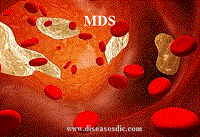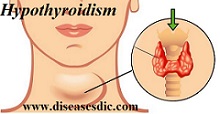Definition Dandruff is a skin condition that makes itchiness and affects mainly the scalp. It is also known as ‘seborrheic dermatitis’ which is the extreme form of the condition includes inflammation of the skin. This cause top layer of the skin gets damaged with scalp starts to broken out. Top …
Read More »Epidermolysis Bullosa (EB) – Definition, Causes, and Treatments.
Definition Epidermolysis Bullosa (EB) is a group of rare genetic skin conditions, which is characterized by extremely fragile skin and recurrent blister formation, resulting from minor mechanical friction or trauma. The skin has two layers; the outer layer is called the epidermis and the inner layer called the dermis. Normally, …
Read More »Myelodysplastic Syndrome (MDS)- Definition, Treatment, and Prevention.
Definition Myelodysplastic syndrome (MDS) is a group of diseases that affect the blood and bone marrow. Bone marrow is the soft, spongy tissue inside bones. In MDS, the blood-forming cells (stem cells) in the marrow slow down, or even stop, making the 3 types of blood cells: Red blood cells …
Read More »Hypothyroidism – Definition, Pathophysiology, and Symptoms.
Definition Hypothyroidism – also called underactive thyroid – is the most common thyroid disorder. It happens when your thyroid gland doesn’t produce enough thyroid hormone, which is essential because thyroid hormone helps regulate important body processes, such as your metabolism. But with low thyroid function, these body processes slow down. …
Read More »Fibroadenoma – Definition, Causes, Treatment and Prevention.
Definition Fibroadenoma is not cancerous. They range in size from smaller than a marble to as large as a golf ball. Most appear suddenly and stay the same size. Some shrink or continue to grow. They are affected by hormones and often change size over the menstrual cycle or during …
Read More »Hyperthyroidism – Definition, Causes, and Treatment.
Definition Hyperthyroidism (overactive thyroid) is a condition in which the thyroid gland produces the high level of the hormone thyroxine. In other words, it can be called as overreactive thyroid. The thyroid gland is an organ located in the front of your neck and releases hormones that control your metabolism …
Read More »Anisakiasis – Description, Causes, and Treatment.
Description Anisakiasis is a human parasitic infection of the gastrointestinal tract caused by the consumption of raw or undercooked seafood containing larvae of the nematode Anisakis simplex (herring worm). Fish, squid, and crustaceans often act as transport host in which larvae grow but do not mature into adults. When larger …
Read More »Ankylosing Spondylitis (AS) – Definition, Pathophysiology, and Causes.
Description Ankylosing spondylitis or AS, is a form of arthritis that primarily affects the spine, although other joints can become involved. It causes inflammation of the spinal joints (vertebrae) that can lead to severe, chronic pain and discomfort. The disease leads to calcification of the spine’s ligaments and discs and …
Read More » Diseases Treatments Dictionary This is complete solution to read all diseases treatments Which covers Prevention, Causes, Symptoms, Medical Terms, Drugs, Prescription, Natural Remedies with cures and Treatments. Most of the common diseases were listed in names, split with categories.
Diseases Treatments Dictionary This is complete solution to read all diseases treatments Which covers Prevention, Causes, Symptoms, Medical Terms, Drugs, Prescription, Natural Remedies with cures and Treatments. Most of the common diseases were listed in names, split with categories.








